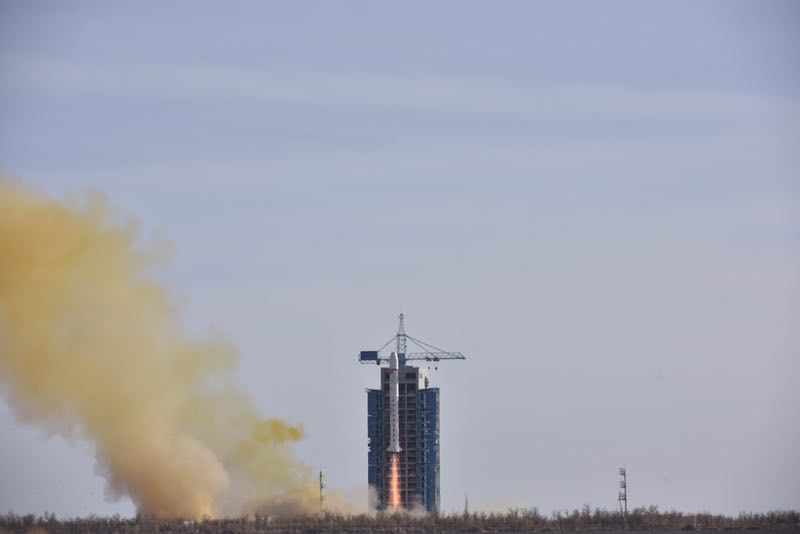Mini-satellites sent aloft to improve VR


Humans may be able to experience a highly realistic space environment in the near future because of the efforts of a Chinese startup, Commsat Technology Development Co, an innovator of mini-satellites.
Ladybeetle I, a 91.85-kilogram satellite equipped with five high-definition cameras, and another six smaller Ladybeetle miniature satellites were lifted into Earth orbit on Friday afternoon, the Beijing-based company announced.
Pictures taken by the five cameras will be stitched together to make a single panorama, with the goal of providing a better spacewalk experience for users of virtual reality glasses on Earth, it said.
The Ladybeetle I, designed and assembled by Commsat, also carry a LED screen that could allow people on Earth to take selfies against the backdrop of mesmerizing views in space, according to Xu Jiakang, one of the devices' chief designers.
"We could upload one's portrait onto the screen, and then use the cameras on the satellite to take photos of the screen in space," he said.
Xu said the VR cameras and the Selfie screen were jointly developed by Commsat, the China Academy of Sciences' Xi'an Institute of Optics and Precision Mechanics and Xi'an CAS Tianta Technology Co.
The Ladybeetle series was launched atop a Long March 2D carrier rocket from the Jiuquan Satellite Launch Center in northwestern China. Five other satellites were also aboard, including two low-orbit remote-sensing satellites contracted by the King Abdulaziz University for Science and Technology of Saudi Arabia, and three small satellites by Hunan Changsha Tianyi Research Institute.
Xie Tao, founder and CEO of Commsat, said the satellites are the first steps in the company's ambitious plan to place 72 such craft into orbit by 2022.
The seven Ladybeetle satellites would conduct experiments in the internet of things and attempt to fulfill a series of tasks, such as tracing cargo ships and monitoring endangered wildlife, he said.
Peng Yuanyuan, Commsat's co-founder, said another four satellites are expected to be placed into orbit by the end of 2019. Alongside the Ladybeetle satellites, they may be able to provide commercial services, including monitoring overseas purchases.
"Data will update every four hours to tell a cargo ship's location, as well as the temperature and humidity inside the containers and whether they've been opened or not," she said.
The update frequency increases as more satellites join the network and ultimately will be able to achieve something close to real-time monitoring, she added.
Founded in 2015, Commsat has been an innovator in the use of mini-satellites. In February, the company launched a CubeSat-Young Pioneer I-which enabled students to track and help control the spacecraft from ground stations built at schools nationwide.
Today's Top News
- Xi's Quotes: Shared wisdom in Chinese and Latin American cultures
- Xi replies to founder of Danish Chamber of Commerce in China
- New guideline bolsters green inspections
- China, Chile urged to create model of common development
- Exporters pivot to home market amid headwinds
- BRI diversifies paths for CELAC cooperation






























